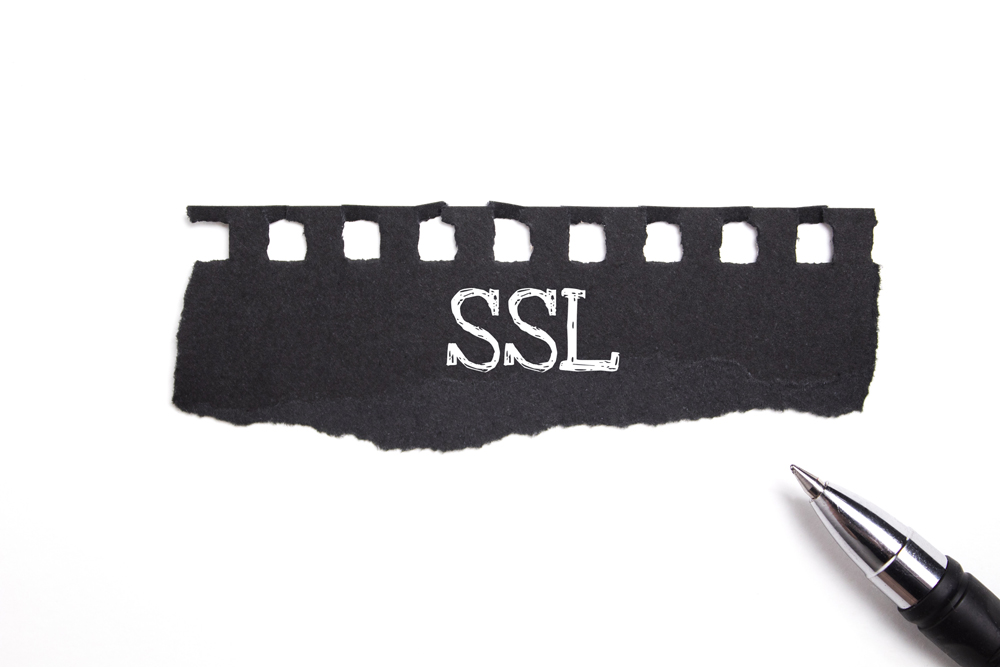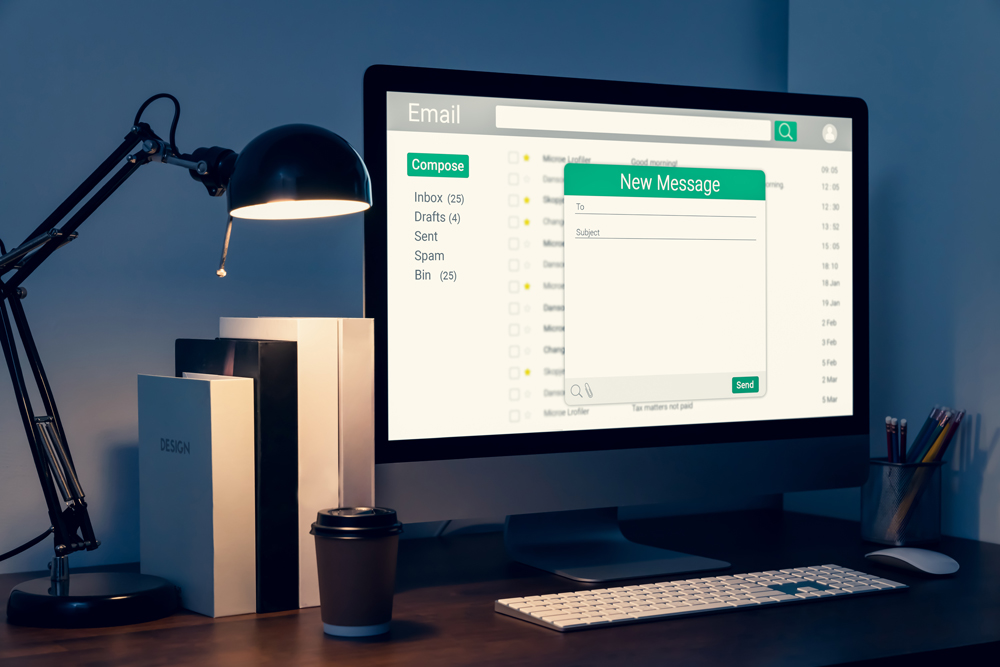How often have you received emails from someone claiming they want to send you something important or urgent? Chances are, you probably ignored them because you thought they were spam. Unfortunately, these emails are called phishing attacks, and they are becoming more common. This article explains exactly what man-in-the-middle phishing (MITM) is, why it happens, and how to prevent it so you can stay safe.
Table of Contents
What Is A Man-In-The-Middle Phishing Attack?

A man-in-the-middle phishing attack occurs when threat actors send out emails that appear to be from a trusted source, such as your bank or credit card company. The attacker then intercepts all the information you enter into the email and uses it for their gain.
Types Of Man-In-The-Middle Phishing Attacks

1. Spoofing
DNS spoofing attacks occur when someone uses a fake IP address to fool a computer into believing its communication is happening with a legitimate website.
To pull off this trick, the attacker needs to own a machine with two network interfaces, one public and one private. He can then configure both interfaces to appear as though they belong to the same computer. If an unsuspecting victim connects to the Internet via the public interface, the attacker can capture the traffic and replace the source IP address with his own.
2. Impersonation
An attacker might also try to impersonate a website or app. For example, he could create a fake login form that looks exactly like the real one. Anyone clicking the link will think they are logging into their bank account, but they’ll end up at a hacker’s site.
Another example would be if someone were to send you an email saying they have lost access to your account and need you to verify your password. They will ask you to click on a link that will take you to a website where you can change your password. Once there, the attacker has gained access to your account and can do anything with it.
3. Modifying Data Packets
Another common type of man-in-the-middle cyber attack involves modifying data packets. Attackers can modify the headers of outgoing packets to make them look like they’re coming from somewhere else. They can also insert their headers into incoming packets to fool recipients into believing that the message was sent by someone else.
In addition to these basic man-in-the-middle attacks, several more advanced techniques are used by hackers to steal information. These include:
4. Session Hijacking
A session hijacker is a piece of malware that takes control of a user’s web browser. It does so by modifying cookies stored on the user’s hard drive. Cookies contain small pieces of information that identify users and keep track of what websites they’ve visited. The hijacker can change the user’s identity by changing the session cookies. Session hijackers are often used in combination with keyloggers (see below).
5. Keylogging
A keylogger records every keystroke a user makes while interacting with a computer. Keyloggers are commonly installed on computers without the owner’s knowledge. They record everything typed on the keyboard, including passwords and credit card numbers.
6. Spearphishing
Spearphishing is a technique where an attacker crafts messages designed to trick specific targets into revealing personal information. A spearphisher may send emails pretending to come from a trusted friend or family member. She may even ask for help recovering lost files. But instead of asking for your password, she asks for your social security number or credit card details.
7. Social Engineering
Social engineering is a method of gaining access to sensitive information through deception. An attacker uses various methods to get people to reveal confidential information, such as usernames and passwords. The most common way is to pretend to be someone else. This is known as pretexting. Another popular tactic is to pose as a legitimate company representative who requires specific information before providing it.
8. Phishing
Phishing is a technique where attackers lure victims to a fraudulent website using email messages that appear to be from well-known companies. When users visit the fraudulent website, they provide their username and password. The attacker then collects all the information entered by the victim.
Hackers are doing a much better job on their phishing campaigns as of late because they have practiced their phishing techniques over and over again. Some hackers have developed phishing scripts that mimic the look and feel of many different sites.
Did you know there are phishing toolkits on the dark web? They come with a list of available phishing domains, premade phishing websites, scripts, sample emails, and anything else you’d need to start a successful phishing campaign.
9. Man-On-The-Side
This is a variation of a man-in-the-middle attack. Instead of spoofed traffic, the attacker sends his traffic alongside the legitimate traffic. He can do this because he has gained access to the network between the sender and recipient.
10. SSL Hijacking
SSL hijacking allows hackers to interrupt a browser session to intercept sensitive information like passwords and credit card numbers. SSL stands for Secure Sockets Layer. It’s a protocol that encrypts data transmitted across networks. Hackers use SSL hijacking to intercept data traveling between you and the bank or online retailer you’re doing business with.
11. Email Hijacking
An email hijack occurs when a hacker gains access to a user’s inbox and changes an email message’s subject line or body text. If the victim clicks on the link in the email, the hacker will have full access to the victim’s account.
12. Browser Attacks
Browser hijacking occurs when a hacker installs malicious software on a user’s computer that redirects all Internet activity to another site. For example, if a user visits www.bankofamerica.com, the hacker could redirect her to a fake website, allowing them to steal login credentials.

13. Malware
Malicious websites can steal your data by taking over your web browser. Malware infects your computer when you click on a link in an email message or open an attachment. Once inside your system, the malware installs itself on your computer. Then it collects information about you, your friends, and your family.
14. Viruses
An attacker could use a virus to take control of your computer. Viruses are programs that replicate themselves. If you don’t remove them quickly enough, they can damage your operating system. You can also download viruses yourself. For example, if you receive an email message that looks suspicious, you should never open it.
15. Fake Access Points
Rogue AP devices can create rogue WiFi hotspots. These fake hotspots allow attackers to capture login credentials and other sensitive information. Rogue AP devices are often used to spy on employees at work.
How To Prevent Man-In-The-Middle Phishing Attacks?
1. Two-Factor Authentication
Use two-factor authentication (2FA) whenever possible. 2FA adds another layer of protection against phishing attacks. With 2FA, you need both something you know (your password) and something you have (a code sent via text message).
If you must use single-factor authentication, make sure you choose one that’s easy for you to remember but still complicated. Also, avoid reusing passwords. Use different passwords for each account.
2. Multi-Factor Authentication
Another option is multi-factor authentication. You need more than just a password to log into your accounts. Multi-factor authentication usually involves a second factor, such as a security question or a physical authentication token.
You can also set up a security key fob that requires a PIN before allowing you to log in.
3. Don’t Rely On Email Alerts
Email alerts aren’t always reliable. They may not tell you everything you want to know. For example, if an email alert says there’s been a change made to your account, but you didn’t log into your account recently, you might miss that someone changed your password.
4. Be Careful What You Click
Be careful what you click. Don’t click links in emails unless you trust the source. Avoid phishing emails and always verify email addresses. Never provide financial information via email.
5. Keep Your Software Up To Date
Updating software helps protect you from cyberattacks. Make sure you keep your software up to date. If you’re unsure of how to update your software automatically, ask your MSP or send us a message.
6. Install Security Updates Automatically
Most modern computers come with automatic updates turned off. That means you must manually update your software every time a new version comes out. But turning off automatic updates isn’t safe either. Attackers can exploit security vulnerabilities before you get notified. So turn on automatic updates.
7. Password Protection
Your password shouldn’t be easy to guess. Choose a strong password that includes letters, numbers, and special characters. This goes double for your WiFi password. Also, ensure you aren’t using the same PIN codes for multiple accounts.
8. HTTPS
Ensure that every site you visit is secure. HTTPS stands for Hypertext Transfer Protocol Secure. It encrypts all traffic between your device and the website so no one else can see your online activity.
9. Use A VPN
A Virtual Private Network (VPN) creates a private network connection between your device and a remote server. Using a VPN protects you from hackers who may try to intercept your Internet traffic. A virtual private network (VPN) creates a secure connection between two computers. By connecting to a VPN server, you can browse the Internet securely.
You can also use a proxy service to hide your identity and protect your personal information. Proxy services make sure no one knows what sites you’ve visited.
10. Be Careful What You Share
Be careful about what you share over WiFi networks. Don’t give away your login information. Also, avoid clicking links in emails or opening attachments.
11. Firewall
Make sure you have a firewall installed on your computer. Firewalls are programs that help prevent unauthorized access to your computer. A firewall also keeps malicious software and threat actors from accessing your computer.
Wrapping Up
In Conclusion, Man-in-the-middle phishing attacks are very dangerous because they trick users into giving up sensitive information such as passwords, credit card numbers, social security numbers, etc. They are designed to steal valuable information from unsuspecting victims.
If you receive any email asking you to click a link or download something, immediately delete it. If you think it might be legitimate, check the sender’s website first. If the site looks suspicious, either block it or report it to your ISP.
If you think you might have fallen victim to MITMP, use your antivirus to scan your computer for viruses. We recommend SentinelOne because it detects malicious software such as spyware, adware, Trojans, rootkits, keyloggers, worms, phishing attacks, etc. Remember, the more layers of security you have, the better protected you will be.
Finally, if you have any questions or need assistance, please send us an email, and remember to stay safe while surfing!







Recent Comments